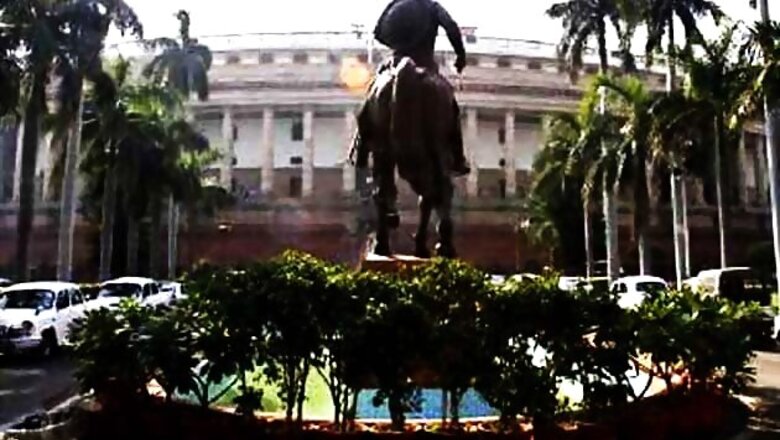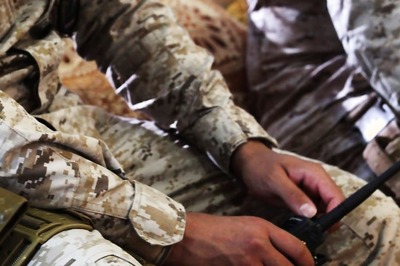
views
It is being argued that India is a case for proportional representation system (PR). The current system of winner takes it all, even if the winning party gets just 1 vote more than all other candidates in the fray is also known as First Past The Post (FPTP).
In a brilliant article analysing the Uttar Pradesh Assembly polls, Economic and Political Weekly's (EPW) Senior Assistant Editor Srinivasan Ramani argues
"It has been argued that the FPTP (First Past the Post) system has run its course in India and that it is time that the country adopted PR systems that would allow for representation of minorities and smaller parties in the legislatures. However, proponents of the FPTP system argue that PR is a recipe for instability as exemplified by the current political deadlock in Nepal, a similar socially stratified country that has adopted the PR system. It is also argued that the FPTP system has not discouraged the growth of smaller parties as seen in the gradual regionalisation and federalisation of India's polity. And that affirmative action in the form of reservation of seats for marginalised groups such as the scheduled castes and tribes as also the need to obtain support from diverse sections of the population has ensured desirable outcomes in terms of representation, without sacrificing too much on inherent stability as compared to PR systems"
India is not new to PR system. Our Upper House election (Rajya Sabha) is actually based on Proportional Representation System. Based on their strength in the state assemblies, political parties can nominate their members to the Upper House. The same system is being followed while electing Members of the Legislative Council (MLC) from the state Assemblies.
Even in the election of the President of India, the citizens play no direct part and he is elected indirectly by the representatives or the people like the American President but no special electoral college is elected, as in the case of America.
Another point of difference that may be noted is that the election of the President of India is by the system of proportional representation, by the single transferable vote, as provided by Article 55(3) of the Constitution, while the American President is elected by the straight vote system.
Is India ready for Proportional Representation System? There are arguments and counter arguments.
What is Proportional Representation System?
Proportional representation (PR) is a concept in voting systems used to elect an assembly or council. PR means that the number of seats won by a party or group of candidates is proportionate to the number of votes received. For example, under a PR voting system, if 30% of voters support a particular party then roughly 30% of seats will be won by that party. PR is an alternative to voting systems based on single-member districts or on bloc voting; these non-PR systems tend to produce disproportionate outcomes and to have a bias in favour of larger political groups. PR systems tend to produce a proliferation of political parties. There are many different forms of proportional representation. Some are focused solely on achieving the proportional representation of different political parties, while others permit the voter to choose between individual candidates. The degree of proportionality also varies; it is determined by factors such as the precise formula used to allocate seats, the number of seats in each constituency or in the elected body as a whole, and the level of any minimum threshold for election
The advocates of the PR system argue that, in a country like India this alternative reduces the importance of smaller regional parties, which often hold the government to ransom and cause political instability to achieve their narrow goals. The major political parties with nationwide presence get more seats because of the percentage of votes polled in their favour and it ensures stability.
PR would also put a stop to the exaggeration of regional differences. Proportional representation would set that right, allowing all of the parties with significant levels of support to gain seats across the country. And it would also put a stop to the inflated seat count of the Blocs controlled by smaller parties like AIADMK, DMK, SP, BSP, TMC, BJD, JDU etc, who generally receive even less than 10% the total votes polled across India, but a much greater percentage of the seats and a disproportionate bargaining power at the Centre often stalling growth and development of the country.
PR would also bring the nation closer and will complete the total integration of India. It will put an end to extreme regionalism and divisive caste and communal politics.
The people who argue against the PR feel that it will not accommodate the concerns and interests of the miniscule or smaller castes and religions. Also geographically and culturally distinct smaller areas like North East, Goa, Ladakh, Himachal Pradesh and Uttarakhand etc. Because of their smaller number of votes, these areas may not get any representation in the Parliament.
It can also lead to a majoritarian rule with disregard for regional concerns.
As a political analyst says if the electoral trends since 1989 are repeated regularly and the larger parties remain oriented in their social outlook to a limited set of castes and communities and smaller parties continue their narrow politics, the clamour for a shift to the PR system will only grow.
DEMOCRACY DEBATE
It is an election year. Indian democracy is undoubtedly vibrant. But, like all democracies, it not without flaws. Democracy is the best system of governance and there can be no substitute for this. Democracy is not a monolithic system. If offers various options to the voters and it also offers many forms of voting system.
IBNLive.com will be running a series of articles and views on various options before us in the coming months. This month, we will be discussing the Proportional Representation system.



















Comments
0 comment